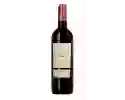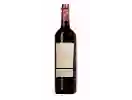
Château BaudareFleurs Blanches Sauvignon
This wine generally goes well with vegetarian, rich fish (salmon, tuna etc) or shellfish.
Food and wine pairings with Fleurs Blanches Sauvignon
Pairings that work perfectly with Fleurs Blanches Sauvignon
Original food and wine pairings with Fleurs Blanches Sauvignon
The Fleurs Blanches Sauvignon of Château Baudare matches generally quite well with dishes of rich fish (salmon, tuna etc), shellfish or vegetarian such as recipes of sea bream with sweet spices, waterzooï of the sea or nanie's diced ham quiche.
Details and technical informations about Château Baudare's Fleurs Blanches Sauvignon.
Discover the grape variety: Cinsault
Cinsaut noir is a grape variety that originated in France (Provence). It produces a variety of grape specially used for wine making. It is rare to find this grape to eat on our tables. This variety of grape is characterized by large bunches and large grapes. Cinsaut noir can be found in several vineyards: South-West, Cognac, Bordeaux, Provence & Corsica, Rhône valley, Languedoc & Roussillon, Loire valley, Savoie & Bugey, Beaujolais, Armagnac.
Informations about the Château Baudare
The Château Baudare is one of of the world's greatest estates. It offers 24 wines for sale in the of South West to come and discover on site or to buy online.
The wine region of South West
The South-West is a large territorial area of France, comprising the administrative regions of Aquitaine, Limousin and Midi-Pyrénées. However, as far as the French wine area is concerned, the South-West region is a little less clear-cut, as it excludes Bordeaux - a wine region so productive that it is de facto an area in its own right. The wines of the South West have a Long and eventful history. The local rivers play a key role, as they were the main trade routes to bring wines from traditional regions such as Cahors, Bergerac, Buzet and Gaillac to their markets.
The word of the wine: Ban des vendanges
Date of the beginning of the grape harvest, fixed by the lord in the tradition of the Middle Ages and, today, by the prefect.














